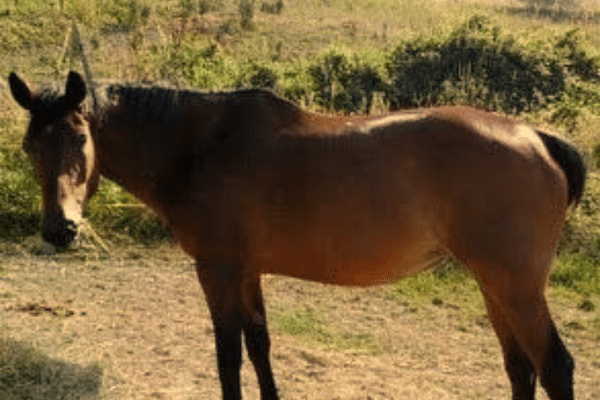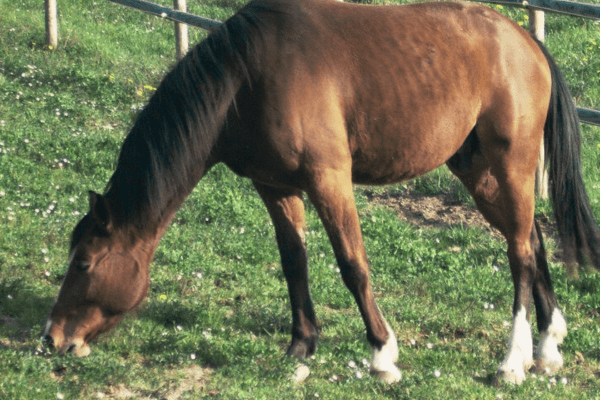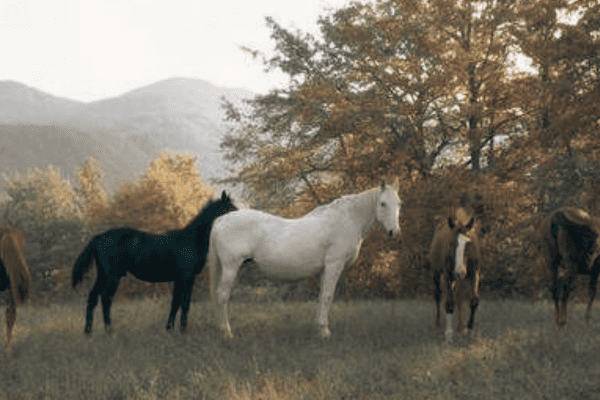The Ventasso Horse, a distinguished and exceedingly rare breed originating from Italy, is recognized for its uniqueness among the limited-distribution indigenous equine breeds. Currently teetering on the edge of extinction, this breed has drawn the focused attention of conservationists and the Italian government.
Concerted efforts are underway to rejuvenate its dwindling numbers. Acknowledging its significance, the Associazione Italiana Allevatori (AIA), a prominent Italian breeders’ association, has officially recognized the Ventasso Horse, thereby underscoring its importance in the annals of Italy’s equine legacy.
History:
The Ventasso Horse, an equine breed of immense historical importance, hails from Reggio Emilia in Italy’s picturesque province. The development of this breed can be found intertwined with both regional history and breeding practices in Italy.
Historical Beginnings Its Ducal Influence: Horses were present in this region prior to the reigns of notable dukes such as Duke Ferdinand of Bourbon and Maria Louisa of Austria, when they patronized fine horse breeding programs.
Serenissimi Farnese Era: Under their influence, Serenissimi Farnese further expanded equine culture in the area by leaving behind high-quality horse breeding that laid the groundwork for Ventasso breed development.
Military Significance
Contribution to Italian Military: As Italy unified, this region continued its tradition of excellence by providing horses to the Italian military. These horses were known for their robustness and resilience – qualities ideal for military use.
End of Military Use: Military use for horses was popular until the 1940s, after which there was a change in role and perception due to changes in military needs and technologies.
Evolution through Breeding
Borzacchi-Bertoldi and Ramiseto Involvement: Over time, major breeding initiatives were initiated at Borzacchi-Bertoldi and Ramiseto stud farms to enhance breed characteristics by including English bloodlines into breeding programs.
Introduction of Maremmano Bloodline: A new variety of Maremmano horses was included in breeding mix, increasing genetic diversity and strength of breed.
Pioneer Crossbreeding in the 1960s
Strategic Breeding Decisions: One key moment occurred in the 1960s at Borzacchi-Bertoldi Stud Farm when a deliberate decision was made to crossbreed two improved Maremmano stallions with Lipizzan stallion sires for cross breeding purposes.
Effect of Lipizzan Inclusion: The addition of the Lipizzan, an elegant and agile breed, further enhanced the Ventasso breed’s characteristics.
The Modern Ventasso Horse
Result of Diverse Genetics: The Ventasso Horse today is the result of decades of diverse breeding history. It embodies resilience and strength from traditional Italian breeds while at the same time embodying elegance from Lipizzan lines and robustness from English breeding lines.
Symbol of Italian Equine Heritage: Today, the Ventasso Horse stands as an iconic representation of Italy’s rich equine history and ongoing commitment to safeguarding unique, regional breeds.
The Ventasso Horse’s journey from ducal stables in Italy in historical times to today represents one of careful cultivation, strategic breeding, and strong connections with regional culture. Not only does this breed stand as an important chapter in Italian equine history; they also embody innovation and preservation within horse breeding.

Physical Characteristics:
Ventasso Horses are well known for their robust and sturdy build, typically standing 14 to 15 hands high.
Their coat colors typically consist of bay, chestnut and grey with their heads featuring well-proportioned straight profiles that feature strong neck muscles as well as broad chests with well-rounded hindquarters – these physical traits contributing to remarkable stamina and agility on mountainous terrains.
Temperament:
One of the standout qualities of Ventasso Horses is their placid and gentle temperament. These horses are known for their intelligence and willingness to work, making them suitable for various equestrian activities such as jumping. Their patience and reliability make them particularly suitable for beginner riders as well as therapeutic riding programs.
Modern-Day Use and Conservation:
Today, Ventasso Horses are utilized in multiple disciplines including trekking, endurance riding and agricultural work. While their versatility and hardiness remain appreciated, like many native breeds they face threats due to modernization and reduced traditional uses. Efforts are being taken to preserve this breed through breeding programs as well as encouraging their use in sustainable agriculture and ecotourism initiatives.
Cultural Impact:
The Ventasso Horse is more than a breed; it plays an integral part of Emilia-Romagna culture. Festivals, competitions and local traditions honor this horse as part of local history and culture – celebrating not only its presence but also teaching people about the value of preserving native breeds.


